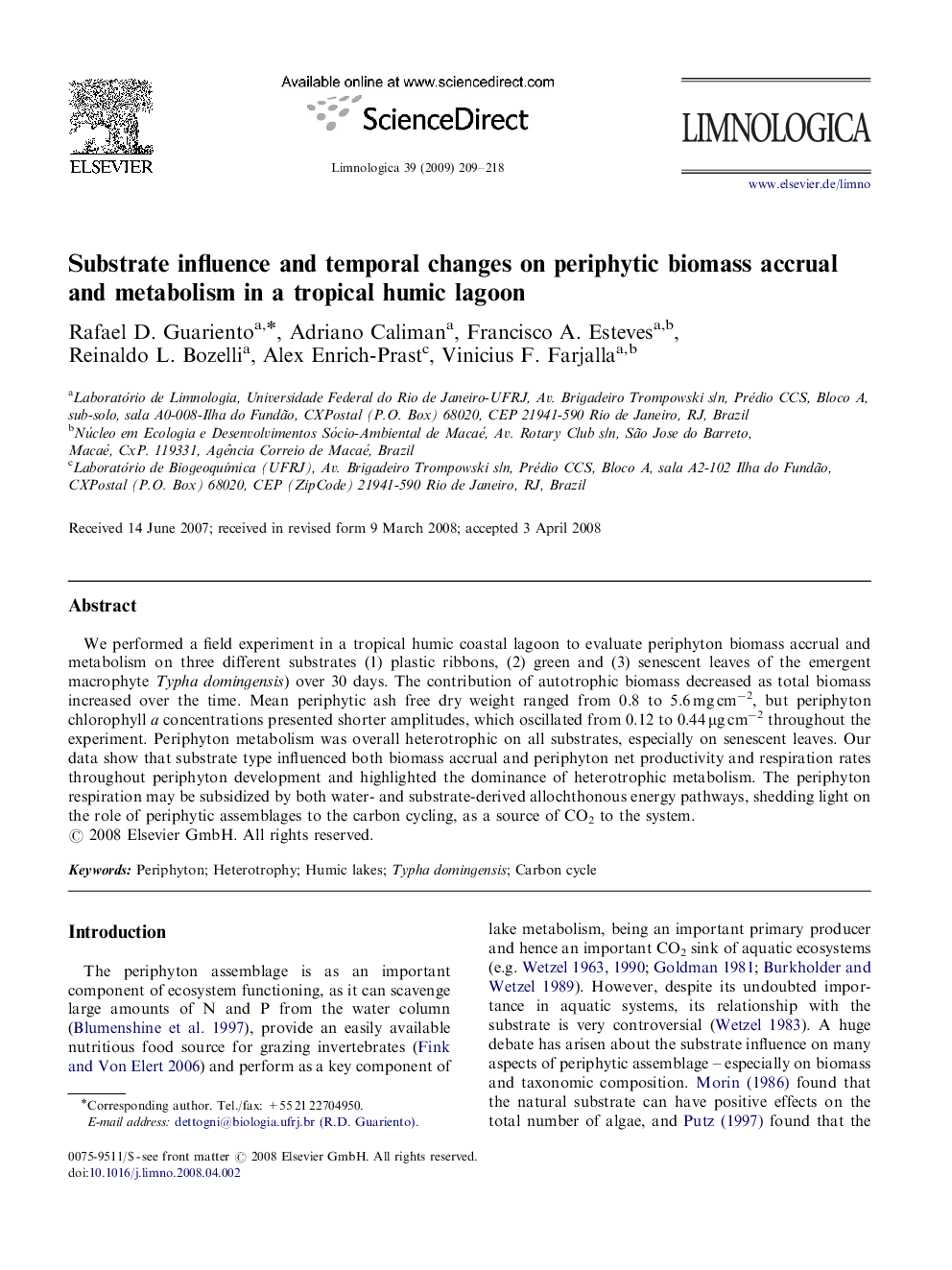| Article ID | Journal | Published Year | Pages | File Type |
|---|---|---|---|---|
| 4400661 | Limnologica - Ecology and Management of Inland Waters | 2009 | 10 Pages |
Abstract
We performed a field experiment in a tropical humic coastal lagoon to evaluate periphyton biomass accrual and metabolism on three different substrates (1) plastic ribbons, (2) green and (3) senescent leaves of the emergent macrophyte Typha domingensis) over 30 days. The contribution of autotrophic biomass decreased as total biomass increased over the time. Mean periphytic ash free dry weight ranged from 0.8 to 5.6 mg cmâ2, but periphyton chlorophyll a concentrations presented shorter amplitudes, which oscillated from 0.12 to 0.44 μg cmâ2 throughout the experiment. Periphyton metabolism was overall heterotrophic on all substrates, especially on senescent leaves. Our data show that substrate type influenced both biomass accrual and periphyton net productivity and respiration rates throughout periphyton development and highlighted the dominance of heterotrophic metabolism. The periphyton respiration may be subsidized by both water- and substrate-derived allochthonous energy pathways, shedding light on the role of periphytic assemblages to the carbon cycling, as a source of CO2 to the system.
Related Topics
Life Sciences
Agricultural and Biological Sciences
Aquatic Science
Authors
Rafael D. Guariento, Adriano Caliman, Francisco A. Esteves, Reinaldo L. Bozelli, Alex Enrich-Prast, Vinicius F. Farjalla,
